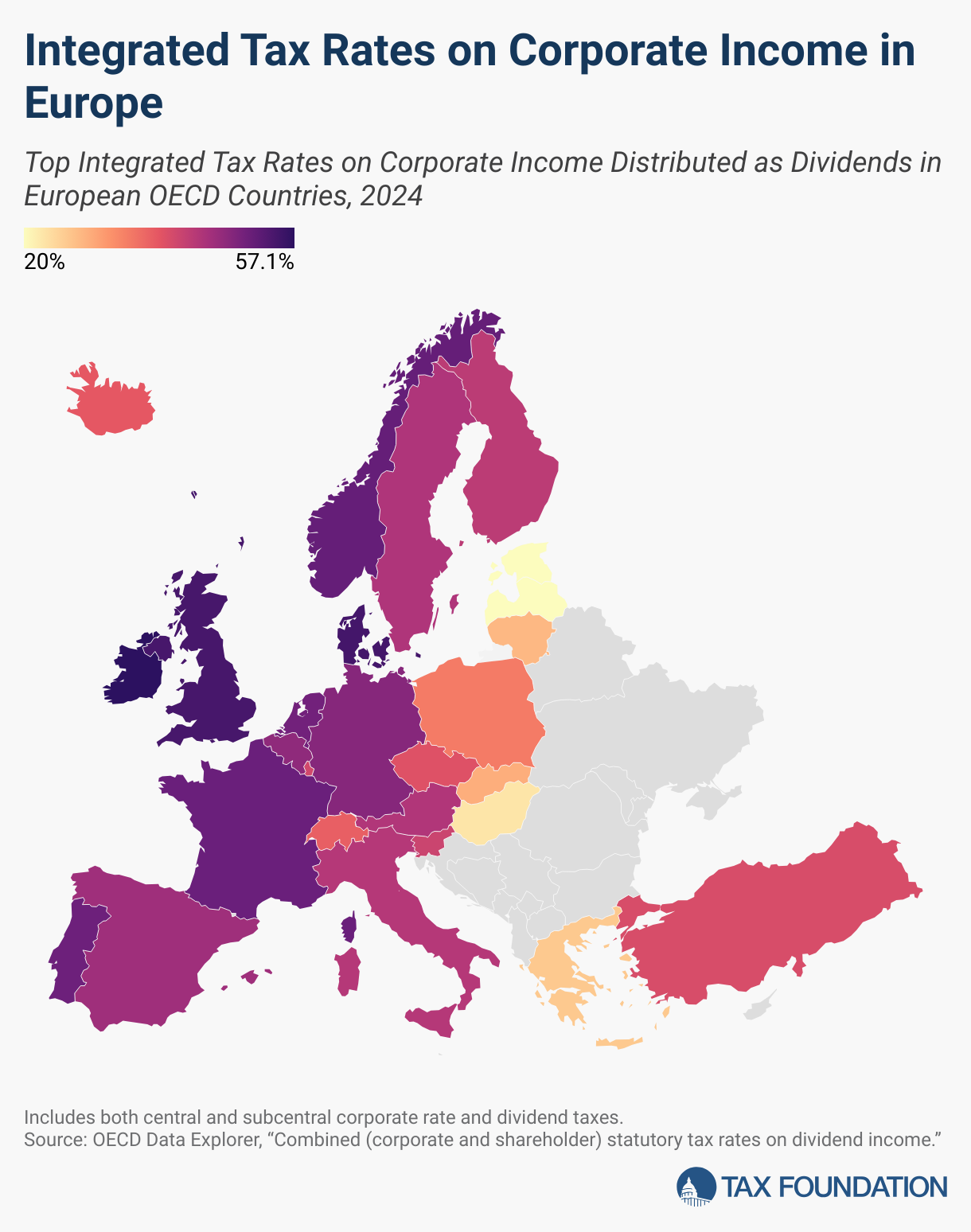Taxes on retirement income for accountant advisors
Retirement tax strategies, FAQs, tax breaks, and more.
As an accountant, advising your clients on retirement income taxes and related strategies can help them to optimize their financial planning in their golden years. That’s why it’s important to have a thorough understanding of the tax implications, contribution limits, and distribution rules associated with various retirement accounts, including 401(k)s, IRAs (Traditional and Roth), and pension plans.
Let’s take a look at some commonly asked questions on retirement income taxes and how your firm can best advise clients as they approach their retirement years.
Jump to:
10 tax-efficient retirement strategies
As older adults approach retirement, a common question is often whether or not they have to pay taxes on their retirement income. From an accountant’s perspective, the answer to this question varies depending on the source of the income and applicable tax laws.
To help your clients make the most of their retirement, consider these ten tax-efficient retirement strategies:
- Withdraw strategically. Consider factors like the timing and amount of withdrawals to minimize tax liability over the long term. For example, it may be beneficial to withdraw funds strategically to stay within certain tax brackets.
- Convert to a Roth IRA. Evaluate the potential benefits of converting traditional retirement accounts to Roth IRAs.
- Consider pension and annuity payments. If your client receives retirement benefits in the form of pension or annuity payments from a qualified employer retirement plan, all or some portion of the amounts they receive may be taxable unless the payment is a qualified distribution from a designated Roth account.
- Delay Social Security. Guide your clients on when to start receiving Social Security benefits. Delaying benefits can result in higher monthly payments, which can be advantageous for tax planning. Consider the overall financial picture to determine the optimal time to start receiving Social Security.
- Take advantage of tax credits. Identify available tax credits and deductions related to retirement income, such as the Retirement Savings Contributions Credit (Saver’s Credit).
- Work alongside your client’s financial advisors. Collaborate with your client’s financial advisors to develop an investment strategy that takes tax implications into account. For instance, allocating assets between taxable and tax-advantaged accounts can impact the overall tax liability.
- Prioritize estate planning. Help clients with estate planning to minimize estate taxes and ensure a smooth transition of assets to heirs. This may involve establishing trusts, gifting strategies, or other estate planning tools.
- Keep abreast of tax changes. Stay informed on changes in tax laws and regulations that may impact retirement income. Adapt strategies as needed for effective tax planning.
- Don’t forget about healthcare. Consider healthcare costs in retirement, including Medicare premiums and potential long-term care expenses. Understanding the tax implications of healthcare expenses is an important piece of comprehensive retirement planning.
- Empower your clients. Educate your clients about the tax implications of their financial decisions. Ensure they understand the impact of their choices on their overall tax liability.
Do you pay taxes on retirement income?
When it comes to taxes on retirement income, it all depends on the source and nature of that income. Let’s take a look at some common types of retirement income and their tax implications.
- Social Security benefits. The taxation of Social Security benefits depends on your total income. If your combined income (which includes half of your Social Security benefits, plus other income sources) exceeds a certain threshold, a portion of your Social Security benefits may be subject to income tax. The thresholds for taxation can change, so it’s important for accountants to stay up to date on the current rules.
- Traditional IRA and 401(k) distributions. Distributions from traditional IRAs and 401(k) plans are generally taxed as ordinary income. If your client made pre-tax contributions to these accounts, they will pay taxes on both their contributions and the investment gains when they withdraw funds in retirement.
- Roth IRA distributions. Qualified withdrawals from Roth IRAs are typically tax-free. Since contributions to Roth IRAs are made with after-tax dollars, withdrawals of contributions and earnings are tax-free if your client meets certain criteria, such as being at least 59½ years old and holding the account for at least five years.
- Pension income. Pension income is generally taxable, similar to traditional IRA and 401(k) distributions. The taxation depends on whether your client contributed to the pension with pre-tax or after-tax dollars.
- Annuity distributions. Annuity distributions may be partially taxable, depending on whether they come from contributions made with pre-tax or after-tax funds.
- Investment income. Income generated from investments in taxable accounts, such as dividends and capital gains, is subject to taxation. However, the tax rates for long-term capital gains and qualified dividends are often lower than ordinary income tax rates.
- Employer-sponsored retirement plans. Some employer-sponsored retirement plans, like pensions or certain profit-sharing plans, may provide a portion of income as a lump-sum distribution. The tax treatment of these distributions can vary, and it’s important to understand the specific rules governing each plan.
Remember: When filing tax returns, it’s important to accurately report all income sources. For accountants, it is important to remind your clients that early distributions from qualified retirement plans or other tax-favored accounts may incur penalties and trigger the need to file Form 5329.
Do you pay social security on retirement income?
Once you stop working, you stop paying taxes for Social Security and Medicare. However, if you continue to work, even if you are receiving benefits, you will continue to pay Social Security taxes on your earnings.
That said, it’s important to note that while the benefits themselves are not subject to Social Security taxes, a portion of your Social Security benefits may be subject to federal income taxes based on your overall income. The taxation of Social Security benefits is determined by your combined income, which includes not only your Social Security benefits but also other sources of income, such as pensions and wages.
If your combined income exceeds certain thresholds, up to 85% of your Social Security benefits may be subject to federal income tax. The specific thresholds for taxation can change, so it’s important to stay informed so you can personalize advice based on each client’s individual situation.
Do you pay Medicare tax on retirement income?
Generally, you don’t pay Medicare tax on retirement benefits or investment income. Medicare taxes are lumped under the Federal Insurance Contributions Act (FICA). FICA and Medicare taxes apply only to earned salary or wages, not retirement income. But if you continue to work part-time or remain self-employed, you’ll continue to pay Medicare taxes.
It is important to note that certain types of retirement income, such as traditional 401(k) or IRA withdrawals, can contribute to a higher Modified Adjusted Gross Income (MAGI). A higher MAGI may result in higher Medicare premiums.
Let’s take a look at how Medicare taxes work and the best way to explain them to your clients:
- Medicare payroll tax during employment. While you are employed, you and your employer each contribute a portion of your wages to the Medicare program. This includes the 1.45% Medicare Hospital Insurance (HI) tax on all your wages. Additionally, if your income exceeds certain thresholds, you may be subject to an additional 0.9% Medicare tax on the excess earnings.
- Medicare taxes on investment income. The Net Investment Income Tax (NIIT) is a separate tax of 3.8% that applies to certain investment income of taxpayers whose MAGI exceeds statutory thresholds, including interest, dividends, and capital gains. While this tax is not directly labeled as a Medicare tax, the revenue generated from the NIIT is allocated to the Medicare program under the Affordable Care Act (ACA).
- Medicare premiums in retirement. Once you qualify for Medicare, typically at age 65, you may be required to pay premiums for Medicare Part B (outpatient services) and Medicare Part D (prescription drug coverage). The amount you pay is based on your income, with higher-income individuals paying higher premiums.
What’s the tax rate on retirement income?
The tax rate on retirement income varies based on the type of income and the individual’s overall financial situation. Social Security benefits, pension income, and withdrawals from retirement accounts may all be subject to different tax rates. Understanding the tax implications of each income source is important for effective tax planning in retirement.
Here’s a general overview of the tax rates on various sources of retirement income:
- Social Security. Social Security benefits may be subject to federal income tax depending on your combined income. The taxation ranges from 0% to 85% of your benefits, with specific thresholds based on your filing status.
- Traditional IRA and 401(k) distributions. Distributions from traditional retirement accounts, such as IRAs and 401(k)s, are generally taxed as ordinary income. The tax rate depends on your overall income and tax bracket at the time of withdrawal.
- Roth IRA distributions. Qualified withdrawals from Roth IRAs are typically tax-free since contributions were made with after-tax dollars. Earnings on contributions are also tax-free if certain conditions are met.
- Pension income. Pension income is taxed as ordinary income. The tax rate depends on your total income and filing status.
- Annuity distributions. The tax rate on annuity distributions depends on whether the annuity was funded with pre-tax or after-tax dollars. The portion attributable to earnings is generally taxable as ordinary income.
- Investment income. Investment income from taxable accounts, such as dividends and capital gains, is subject to capital gains tax rates. These rates vary based on your income and the type of investment (short-term or long-term).
- Social Security and Medicare taxes. While you are working, Social Security and Medicare taxes are withheld from your wages. The Social Security tax rate is 6.2%, and the Medicare tax rate is 1.45%. Additionally, there is an additional 0.9% Medicare tax on earned income exceeding certain thresholds.
Retirement tax breaks
To alleviate tax burden on retirees, various tax breaks are available to individuals as they plan for and enter retirement.
- Standard deduction increase. When you’re over 65, the standard deduction increases. The specific amount depends on your filing status and changes each year.
- Catch-up contributions. Individuals aged 50 or older are allowed to make additional “catch-up” contributions to their retirement accounts. These catch-up contributions allow older individuals to save more for retirement and potentially reduce their taxable income.
- Saver’s Credit. The Retirement Savings Contributions Credit, also known as the Saver’s Credit, provides a tax credit for eligible individuals who contribute to retirement accounts, such as 401(k)s or IRAs. The credit amount is based on income and the amount contributed to retirement savings.
- Health Savings Account (HSA). Contributions to a Health Savings Account (HSA) can be tax-deductible. While HSAs are primarily designed for medical expenses, after age 65, withdrawals can be made for any purpose without a penalty (though non-medical withdrawals are subject to income tax).
- Qualified Charitable Distributions (QCDs). If you are required to take RMDs from your retirement accounts, you can directly transfer up to $105,000 per year to qualified charities without including the distribution in your taxable income.
- Elderly or Disabled Tax Credit. This credit can also get you a tax refund if the deducted amount exceeds the amount you owe the IRS. To be eligible for this credit, you must be over the age of 65 or permanently disabled. Your income must not exceed certain levels, and those levels change from year to year.
- State-specific tax benefits. State taxes on retirement income can vary. Some states offer additional tax breaks for retirees, such as exemptions on Social Security income, pensions, or other retirement income.
It’s important to note that tax laws can change, and eligibility for these breaks may depend on various factors, including income, age, and specific circumstances.
Tax planning for retirement
Effective tax planning is a crucial aspect of retirement preparation. More and more accountants are taking on an advisory role to help their clients minimize the tax impact on retirement income. Key considerations include the timing of withdrawals from different retirement accounts, managing taxable and tax-free income sources, and taking advantage of available tax deductions and credits.
Learn more about how to become a strategic tax advisor and strengthen your relationships with clients.
Tax qualified retirement plans
There are several types of tax-qualified retirement plans, each with its own set of rules and benefits. Let’s take a look at some of the common types:
- 401(k) plan. Employer-sponsored plans that allow employees to contribute a portion of their pre-tax income to a retirement account. Employers may also match contributions up to a certain limit.
- Traditional IRA. Individual retirement accounts allow individuals to make pre-tax contributions, and the earnings grow tax-deferred until withdrawals are made in retirement.
- Roth IRA. Individual retirement accounts that allow individuals to make after-tax contributions, and qualified withdrawals (including earnings) are tax-free in retirement.
- 403(b) plan. Similar to 401(k) plans, but offered by certain non-profit organizations, such as schools and hospitals, as well as government organizations.
- 457 plan. Deferred compensation plans offered by state and local governments and some non-profit organizations.
- SIMPLE IRA. A plan designed for small businesses with fewer than 100 employees. Both employers and employees can make contributions.
- SEP-IRA. A retirement plan that allows employers to make contributions to traditional IRAs on behalf of employees. Often used by self-employed individuals and small businesses.
- Profit-sharing plan. Employer-sponsored plans where contributions are typically based on a percentage of profits. Employees may receive a share of the company’s profits contributed to their retirement accounts.
- Pension plan. Employer-sponsored plans that promise a specific benefit at retirement, often based on factors like salary and years of service.
- Cash balance plan. A type of defined benefit plan that defines the benefit in terms of a stated account balance. It combines features of both defined benefit and defined contribution plans.
- Keogh plan. Retirement plans for self-employed individuals, including sole proprietors and unincorporated businesses.
- Thrift Savings Plan (TSP). A retirement savings plan for federal employees and members of the uniformed services, similar to a 401(k) plan.
Each of these plans offer various tax advantages, such as tax-deferred growth, tax-deductible contributions, or tax-free withdrawals in retirement. The availability of each plan varies based on factors like employer offerings, self-employment status, and eligibility criteria. By understanding the benefits of each plan you can help your clients boost long-term tax efficiency and optimize their retirement portfolio.
Supporting your clients in retirement
As an accountant, you play a crucial role in helping your clients understand the tax implications of their retirement income. Through proactive tax planning, you can help them enjoy a more financially secure retirement.
With trusted methodology, guidance, and content solutions, Practice Forward can help your firm shift from a compliance-focused model to an advisory services approach that engages and sustains clients through their retirement years.
As the regulatory landscape evolves, stay one step ahead of tax law changes with Checkpoint Edge, a cutting-edge tax research tool, and get the retirement insight you need with the IRA and Retirement Plan Quickfinder Handbook.






